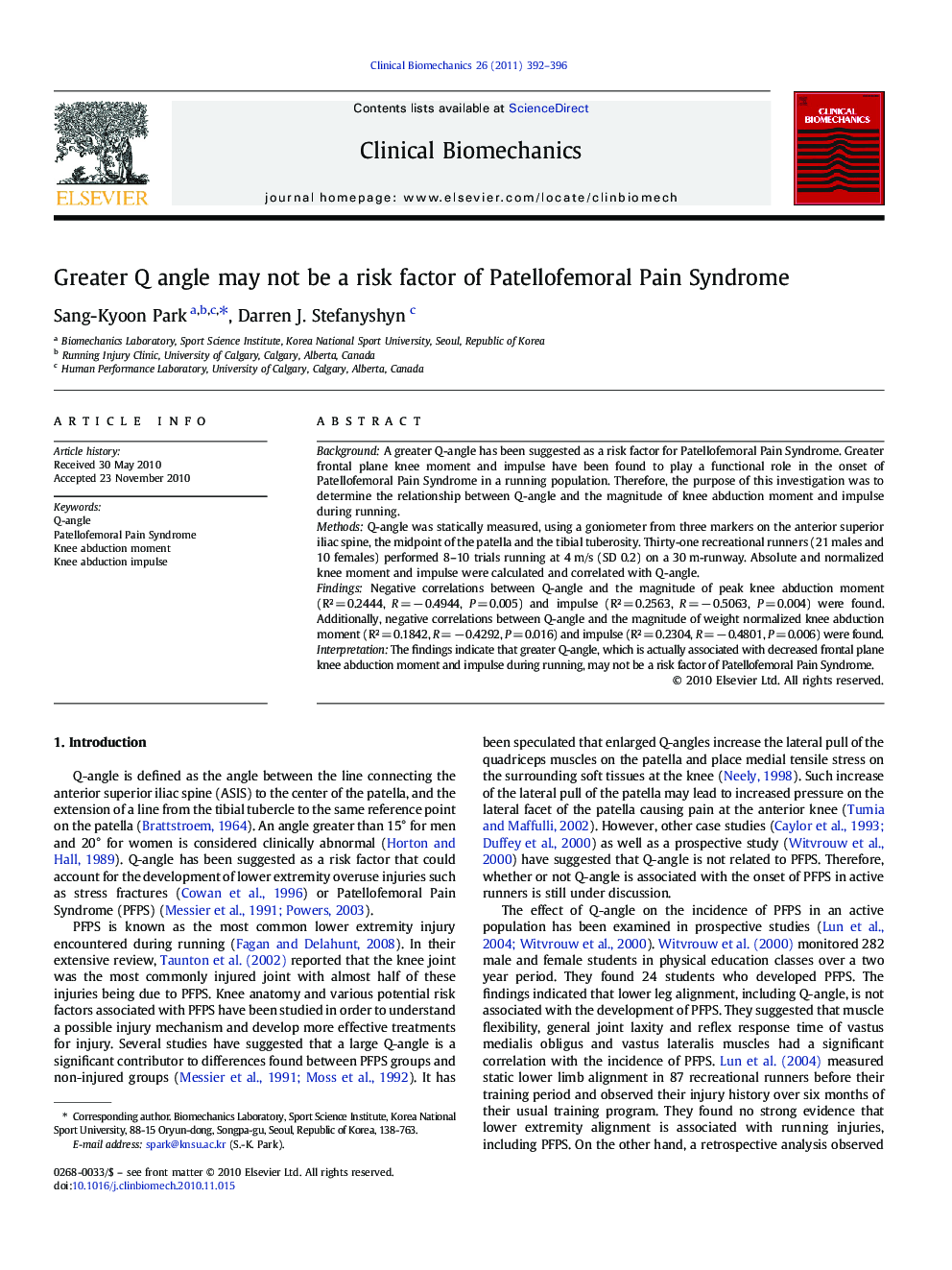| کد مقاله | کد نشریه | سال انتشار | مقاله انگلیسی | نسخه تمام متن |
|---|---|---|---|---|
| 4050826 | 1264960 | 2011 | 5 صفحه PDF | دانلود رایگان |

BackgroundA greater Q-angle has been suggested as a risk factor for Patellofemoral Pain Syndrome. Greater frontal plane knee moment and impulse have been found to play a functional role in the onset of Patellofemoral Pain Syndrome in a running population. Therefore, the purpose of this investigation was to determine the relationship between Q-angle and the magnitude of knee abduction moment and impulse during running.MethodsQ-angle was statically measured, using a goniometer from three markers on the anterior superior iliac spine, the midpoint of the patella and the tibial tuberosity. Thirty-one recreational runners (21 males and 10 females) performed 8–10 trials running at 4 m/s (SD 0.2) on a 30 m-runway. Absolute and normalized knee moment and impulse were calculated and correlated with Q-angle.FindingsNegative correlations between Q-angle and the magnitude of peak knee abduction moment (R² = 0.2444, R = − 0.4944, P = 0.005) and impulse (R² = 0.2563, R = − 0.5063, P = 0.004) were found. Additionally, negative correlations between Q-angle and the magnitude of weight normalized knee abduction moment (R² = 0.1842, R = − 0.4292, P = 0.016) and impulse (R² = 0.2304, R = − 0.4801, P = 0.006) were found.InterpretationThe findings indicate that greater Q-angle, which is actually associated with decreased frontal plane knee abduction moment and impulse during running, may not be a risk factor of Patellofemoral Pain Syndrome.
Journal: Clinical Biomechanics - Volume 26, Issue 4, May 2011, Pages 392–396